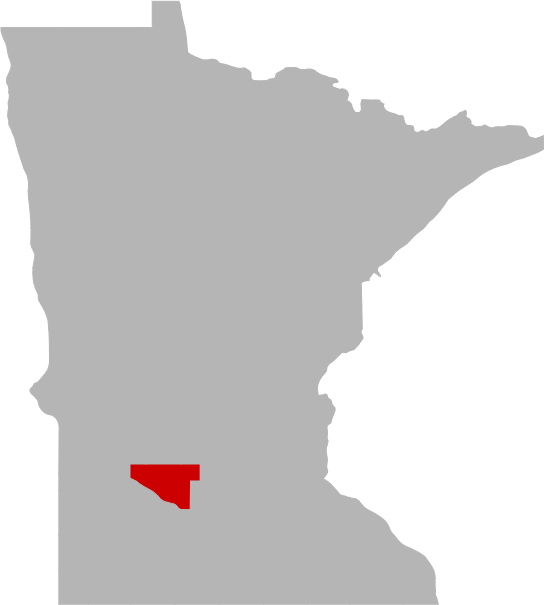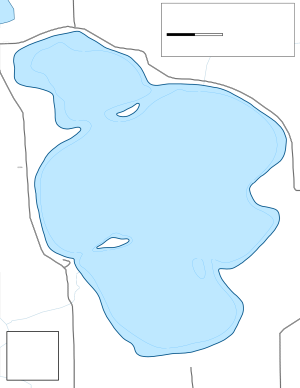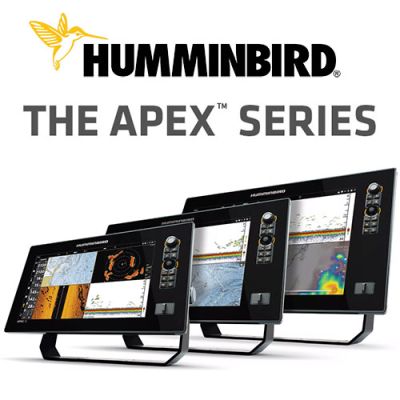Today's Best Fishing Times
Get the best fishing times for Preston Lake with Lake-Link's Fishing Forecast. SEE MORE


Share Your Catch & Win!
Frequently Asked Questions About Preston Lake, MN
- How big is Preston Lake?
- How deep is Preston Lake?
- What kind of fish can you catch in Preston Lake?
- What are the closest cities to Preston Lake?
- Are there places to stay in the Preston Lake area?
- Are there topographical lake maps available Preston Lake?
- Are there boat launches on Preston Lake?
- Are there places to eat and drink near Preston Lake?
- What is the average air temp for Preston Lake?
- Are there any state parks near Preston Lake?
How big is Preston Lake?
How deep is Preston Lake?
What kind of fish can you catch in Preston Lake?
Other fish species in the lake include Blacknose Dace, Fathead Minnow, Golden Shiner, Green Sunfish, Hybrid Sunfish, Johnny Darter, Orangespotted Sunfish and White Sucker.
What are the closest cities to Preston Lake?
Are there places to stay in the Preston Lake area?
More Lodging Options
Are there topographical lake maps available Preston Lake?
Are there boat launches on Preston Lake?
Are there places to eat and drink near Preston Lake?
History & Status of the Fishery
A standard survey (summer gill netting and trap netting) was conducted at Preston Lake in 2015 to evaluate the fish population. Walleye were listed as a primary management species, while northern pike and black crappie were listed as secondary management species in the lake management plan. Winterkill continued to be a limiting factor at this boom-and-bust lake, with the latest partial kill occurring in 2013. Partial winterkills also occurred in 2001 and 2010. Frequency of winterkill increased at Preston Lake from 1-in-5 years for the 2001 to 2015 time period to 1-in-3 years for the 2010 to 2015 time period. Fish populations can fluctuate greatly at Preston, depending on frequency and severity of the winterkill. The cormorant rookery on the north island remained active in 2015. Curly-leaf pondweed, an invasive non-native plant, was present at Preston Lake and can be abundant, especially during May and June. A fishing pier is available to anglers at the public access on the west shore.
Gill nets sampled high numbers (123) of walleye for a catch rate of 13.7/net, which was within the normal range for this type of lake, and the highest catch rate ever measured at Preston. The 2010 catch rate was 10.2/net. Past catch rates, from 1974 to 2015, were variable ranging from 0.0/net to 13.7/net with an average of 5.5/net. In 2015, gill netted walleye were 11.2 inches to 20.1 inches long with an average of 15.3 inches. Approximately 93% of the gill net catch was 14 inches or longer, indicating a quality size structure. Walleye were 1 to 4 years old with 4 year-classes present. Age-2 and age-3 fish corresponded to years when fry were stocked in Preston, accounting for 93% and 5% of the gill net sample, respectfully. The 2013 year-class was strong and likely resulted from the fry stocking that immediately followed the 2013 winterkill. Growth was fast, as would be expected following a winterkill. The presence of age-1 and age-4 fish indicated that natural reproduction (at least 2% of gill net sample) was also occurring. Possible migration of walleye from Allie Lake, which doesn't winterkill as frequently, confounds natural reproduction and stocking evaluations. The latest walleye fry stocking regime (654,960 fry two-out-of-three years) was initiated in 1994. Gill net catch rates during this time period (2000, 2005, 2010, and 2015) ranged from 5.2/net to 13.7/net with an average of 9.4/net, possibly indicating a successful strategy.
Gill nets sampled low numbers of northern pike (28) for a catch rate of 3.1/net, which was within the normal range for this type of lake. The 2010 catch rate was 1.3/net. Catch rates from 1974 to 2015 were highly variable ranging from 0.7/net to 39.5/net with an average of 8.0/net. Northern pike catch rates have been low for the last 20+ years. In 2015, gill netted northern pike were 8.8 to 29.8 inches long with an average of 17.3 inches. Northern pike were not aged in 2015, but the size distributions indicated that multiple year-classes were present. Northern pike tend to do best in lakes with clear water and moderate amounts submergent vegetation.
Gill nets sampled low numbers (16) of yellow perch for a catch rate of 1.8/net, which was below the normal range for this type of lake. The 2010 catch rate was 5.9/net. Catch rates from 1974 to 2015 were variable, but generally low, ranging from 0.4/net to 31.5/net with an average of 5.9/net. Gill netted yellow perch were 5.9 inches to 9.1 inches long with an average of 7.0 inches. Yellow perch were 1 to 2 years old with 2 year-classes present. Age-1 fish accounted for 94% of the gill net sample. Growth was fast. Adult yellow perch (77 pounds) were stocked in 2013, following the winterkill.
Gill nets sampled low numbers (1) of channel catfish for a catch rate of 0.1/net. The 2010 catch rate was also 0.1/net. Historic gill net catch rates from 1974 to 2015 showed that the highest catch rate ever was 0.3/net. The 2015 channel catfish was 9.1 inches long and was likely the result of natural reproduction, which may have occurred in either Preston or Allie Lake. Channel catfish were first gill netted in Preston Lake in 1994, but have never been stocked there, and connected Allie Lake was last stocked in 1989. Winterkill is likely a major limiting factor on channel catfish at Preston Lake. Channel catfish are more sensitive to low oxygen levels compared to many other fish species.
Gill nets sampled low numbers (1) of black crappie for a catch rate of 0.1/net, which was below the normal range for this type of lake and the second lowest ever recorded at Preston. The 2010 catch rate was also low at 0.4/net. Catch rates from 1974 to 2015 were variable, ranging from 0.0/net to 62.0/net with an average of 12.4/net. In 2015, the black crappie was 6.5 inches long. In 2015, trap nets sampled no black crappie. The 2010 trap net catch rate was 0.8/net. Historic trap net catch rates were variable ranging from 0.0/net to 29.8/net with an average of 7.4/net.
Trap nets sampled low numbers (43) of bluegill for a catch rate of 3.9/net, which was within the normal range for this type of lake. The 2010 catch rate was 0.2/net. Catch rates from 1974 to 2015 were mostly low ranging from 0.1/net to 42.6/net with an average of 6.7/net. Bluegill were 3.2 to 5.1 inches long with an average of 4.4 inches, indicating a poor size structure. Winterkill, and subsequent low oxygen levels, was likely a major limiting factor on bluegill at Preston Lake. Bluegill tend to do better in lakes with clear water, adequate oxygen throughout the winter, and moderate amounts of submergent vegetation.
Gill nets sampled low numbers (2) of common carp for a catch rate of 0.2/net, which was below the normal range for this type of lake. The 2010 catch rate was 11.4/net. Catch rates from 1974 to 2015 were variable, ranging from 0.0/net to 23.1/net with an average of 3.5/net. Gill netted common carp were 25.8 inches and 29.7 inches long. The trap net catch rate was 1.1/net which was within the normal range. The 2010 trap net catch rate was 2.3/net. Trap net catch rates from 1974 to 2015 were variable, ranging from 0.0/net to 13.1/net, with an average of 2.4/net. An estimated 10,000 dead common carp were found following the 2013 winterkill at Preston Lake.
Trap nets sampled low numbers (5) of black bullhead for a catch rate of 0.5/net, which was below the normal range for this type of lake and the lowest ever recorded at Preston. The catch rate in 2010 was also low (0.8/net) as was the case in 2005 (2.7net). Most of the previous catches (1974 to 2000) were above the normal range. Historic catch rates from 1974 to 2015 were variable, ranging from 0.5/net to 198.1/net with an average of 69.5/net. Trap netted black bullhead were 6.3 inches to 8.0 inches long with an average of 7.3 inches. Gill nets sampled low numbers (234) of black bullhead for a catch rate of 26.0/net, which was below the normal range for this type of lake. The 2010 catch rate was 0.4/net. Catch rates from 1974 to 2015 were highly variable ranging from 0.4 to 382.5/net with an average of 123.0/net. Gill netted black bullhead were 4.7 inches to 9.0 inches long with an average of 7.3 inches. Both trap net and gill net data indicated that some type of ecological shift had happened to the black bullhead population in the last 10 years. The average gill net catch rate for the 1974 to 2000 time period was 164.0/net compared to the 2005 to 2015 time period average of 13.7/net (12 times lower now). Long-term reduced frequency and severity of winterkill, water clarity changes, increasing numbers of predatory walleye, predation by channel catfish and Double Crested Cormorants were possible explanations for the current status of the black bullhead population at Preston Lake.
What is the average air temp for Preston Lake?
Are there any state parks near Preston Lake?
For more Minnesota State Park information see our State Park Guide.
More Nearby Lakes To Explore
There's more lake's to explore around Preston Lake...| DISTANCE | ACRES | MAX DEPTH | |
| Lake Allie | 1.8 mi | 509 | 12 ft |
| Round Grove Lake | 5.4 mi | 296 | 7 ft |
| Lake Marion | 7.6 mi | 520 | 15.2 ft |
| Otter Lake | 10.1 mi | 642 | 6 ft |
| French Lake | 12.7 mi | 42 | 23 ft |
| Hoff Lake | 13.0 mi | 139 | 8 ft |
| Stahl's Lake | 13.3 mi | 141 | 37 ft |
| Cedar Lake | 13.7 mi | 1,860 | 8 ft |
| Thompson Lake | 14.4 mi | 226 | 8 ft |
| Goose Lake | 14.4 mi | 119 | 12 ft |

















